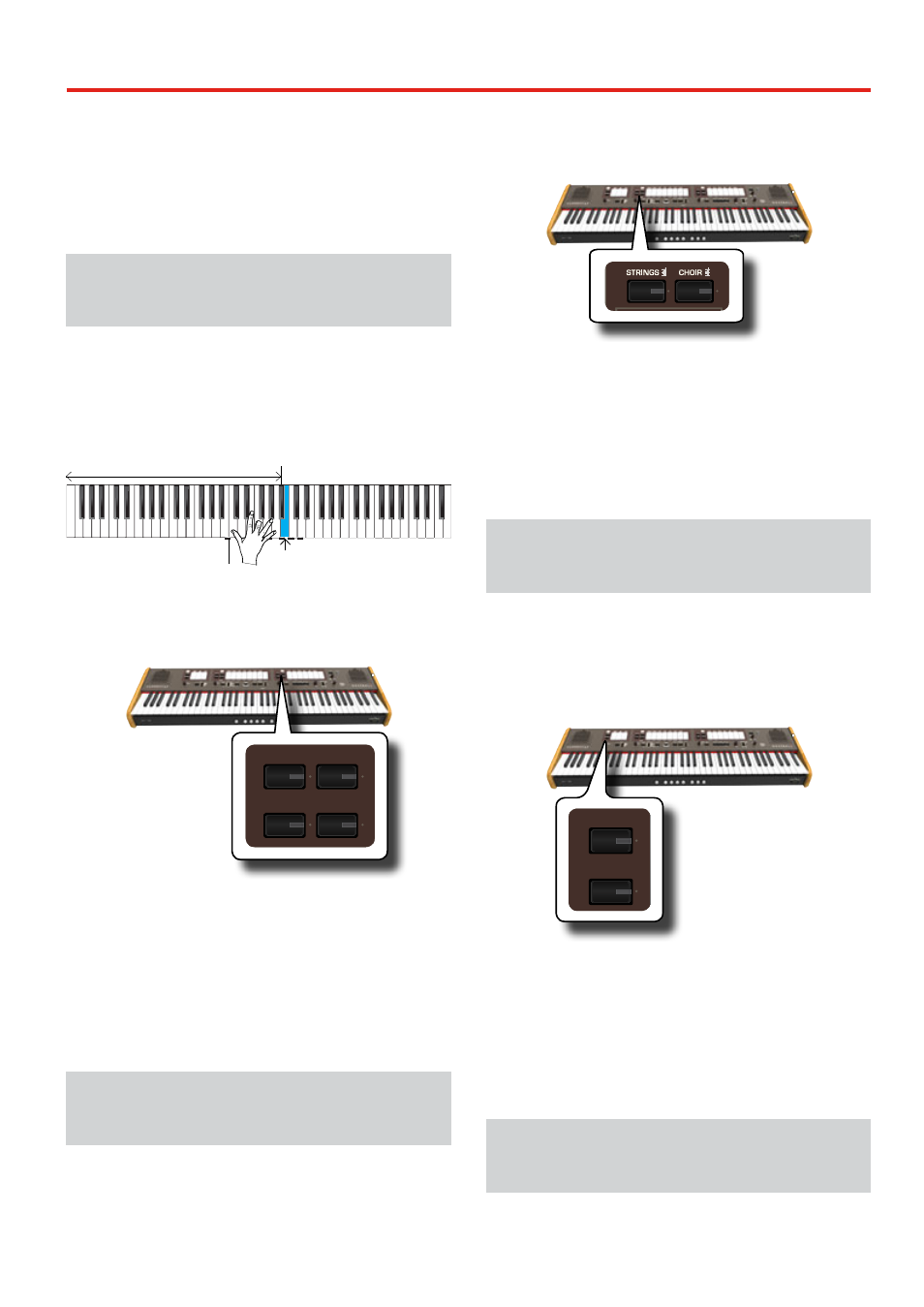Using the orchestral sounds, Playing orchestral sounds with the pedal division, How to select more orchestral sounds (variations) – Dexibell CLASSICO L3 76-Organ User Manual
Page 23

23
Using the orchestral sounds
8
The CLASSICO L3 contains orchestral sections that can be used in isolation
or together with the organ sounds. The orchestral sounds are velocity
sensitive, this means that their volume and timbre depend on the force
with which you press the keys.
Playing Orchestral Sounds with the
MANUAL II Division
In the music compositions the organ and orchestra have a wide repertoire.
Regarding this aspect, the CLASSICO L3 has orchestral sound to give you
the possibility to play many symphonies for organ and solo orchestral
instruments.
The MANUAL II orchestral sounds are monophonic to play the melody
line. If you press a chord on the keyboard, the orchestral section play the
rightmost note of the chord. Playing an appropriate progression of chords,
the rightmost note of the cords will create the melody line.
This note is played by the
Orchestral section
Lowest notes are
played by the
Organ section
Lowest notes
1.
Press an orchestral button [FLUTE], [VIOLIN], [OBOE] or
[TRUMPET] button to select the sound that you want to
play.
/
VALUE/REV TYPE
OBOE
TRUMPET
FLUTE
VIOLIN
REVERB
PLAYER
The pressed button lights. If you press another orchestral button,
the previous selected of this section turns off. In this operation you
can select one sound at a time only.
2.
Press the bottom part of a MANUAL II tilt tab to activate
the desired organ register.
You can activate as many registers as you like.
3.
Play the keyboard.
Play an appropriate progression of chords, the right most note of
the cords will create the melody line.
Playing Orchestral Sounds with the
MANUAL I Division
As we seen before , the MANUAL II orchestral sounds are monophonic to
play the melody line. It is different for the MANUAL I orchestral sounds
that are polyphonic and used as instruments accompanying.
1.
Press an orchestral button [STRINGS] or [CHOIR] button to
select the sound that you want to play.
PIANO
HARPSICHORD
TUNING
TEMPERAMENT
TRANSPOSE
The pressed button lights. If you press another orchestral button,
the previous selected of this section turns off. In this operation you
can select one sound at a time only.
2.
Press the bottom part of a MANUAL I tilt tab to activate
the desired organ register.
You can activate as many registers as you like.
3.
Play the keyboard.
You’ll hear the sounds you selected.
Playing Orchestral Sounds with the
PEDAL Division
As we mentioned before, the PEDAL division can be played via the
keyboard, or with an commercially available MIDI pedalboard.
If you use the keyboard, the orchestral section is monophonic and the
leftmost note played on the keyboard is added to the Organ division.
1.
Press an orchestral button [BASS]or [ORCHESTRA] button
to select the sound that you want to play.
BASS
ORCHESTRA
ORGAN
The pressed button lights. If you press another orchestral button,
the previous selected of this section turns off. In this operation you
can select one sound at a time only.
2.
Press the bottom part of a PEDAL tilt tab to activate the
desired organ register.
You can activate as many registers as you like.
3.
Play the keyboard.
You’ll hear the selected sounds.
How to Select More Orchestral Sounds
(Variations)
The CLASSICO L3 allows you to select orchestral sounds (even though
there is only one button for each category (Flute, Violin, Oboe, Trumpet,
Strings, etc). See "CLASSICO L3 Orchestral Tone List" (p. 24).